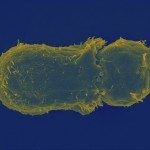Link to Pubmed [PMID] – 2437014
Immunol. Rev. 1987 Feb;95:5-36
Two pathways of human lymphocyte activation are known to exist on T-lineage cells. The first involves the T-lymphocyte receptor for antigen (T3-Ti) which operates in conjunction with gene products of the MHC complex and is a molecular complex composed of 5 polypeptide chains. Both the 49KD alpha and 43KD beta chains are immunoglobulin-like and thus contain variable domains responsible for ligand binding. In contrast, the 20-25KD T3 gamma, delta and epsilon chains are monomorphic structures presumably involved in transmembrane signalling. The alpha and beta subunits are disulfide bonded to each other and held in noncovalent association with the T3 chains. The second pathway involves the 50KD T11 sheep erythrocyte binding protein. The T11 pathway is operational during early intrathymic ontogeny, prior to T3-Ti receptor expression. Under physiologic conditions, T3-Ti and T11 pathways appear to function in series with T11, representing a more “nuclear proximal” structure. However, each pathway, independently of the other, can activate the phosphoinositol cascade and lead to elevation in cytosolic free calcium. The latter is critical for transcriptional activation of the endogenous IL-2 gene. The ability of the T3-Ti complex to regulate T11-mediated activation is discussed with reference to its possible role in thymic selection.

